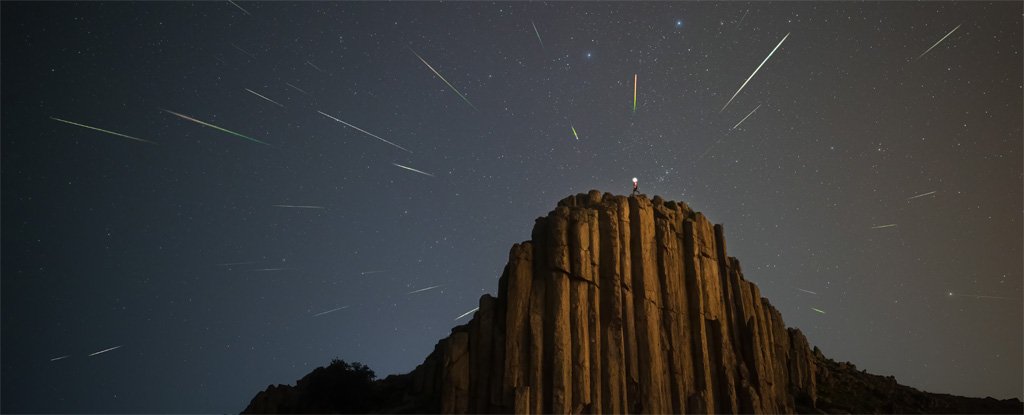Products You May Like
Once a year, from mid-July to late August, Earth passes through a cosmic junk heap that pelts our planet with thousands of tiny space rocks no wider than a grain of sand. We call this annual event the Perseid meteor shower – or simply the Perseids.
This year, the Perseids peak in the dark hours between 11 August and 12. Unfortunately, the fact that there’s a bright full moon around the same time will dampen the show.
You may be able to see 10-20 meteors per hour during the peak, according to NASA – down from the 50 to 60 per hour visible on a non-full-moon year.
Still, you should be able to catch some shooting stars in the nights leading up to the peak, as well.
The Perseids are one of the most popular and consistent meteor showers of the year. They occur each summer when our planet passes through the vast tail of debris dropped by the comet Swift-Tuttle, which made its last close approach to Earth in 1992.
As Earth swoops through the comet’s icy, rocky leftovers, small bits of debris plunge through our atmosphere, heating up to more than 3,000 degrees Fahrenheit (1,650 Celsius) and streaking through the sky at more than 100,000 mph (160,000 km/h), according to NASA.
Most of these tiny meteors burn to a crisp in the atmosphere, though a rare few crash land on the planet’s surface, whereupon they earn the new title “meteorites”.
While the Perseids last several weeks, the greatest spectacle begins when Earth passes through the densest part of comet Swift-Tuttle’s debris cloud.
On a typical year, stargazers can expect to see about 60 meteors per hour during the shower’s peak, according to NASA.
This year, that number will be considerably lower, as the full Sturgeon Moon will obscure some of those falling rocks with its bright light.
To give yourself the best shot at seeing the Perseids peak, Live Science’s sister site Space.com recommends heading out to the darkest place you can find in the pre-dawn hours of 12 August or one of the nights leading up to the peak.
Settle in, as your eyes can take up to 30 minutes to adjust to the darkness, and look north toward the constellation Perseus, which follows behind the bright W-shaped constellation Cassiopeia.
(Meteor showers are typically named after the constellation from which the meteors appear to radiate – in this case, Perseus. In reality, the meteors are right there in the atmosphere.)
Humans have been watching the Perseids for thousands of years. In 1862, two astronomers – Lewis Swift and Horace Tuttle – independently discovered a massive near-Earth comet, now known as Comet Swift-Tuttle.
A few years later, another astronomer realized that this comet produced the Perseid meteor shower, according to NASA.
Comet Swift-Tuttle is massive – in fact, NASA says, it’s the largest object known to repeatedly fly past Earth. The comet’s nucleus (the solid, central part of the comet, separate from the bright glow that surrounds it) measures about 16 miles (26 kilometers) wide.
For comparison, the Chicxulub asteroid that hit Earth 65 million years ago and led to the extinction of the dinosaurs only measured about 7.5 miles (12 km) across.
Swift-Tuttle orbits the Sun, completing a full pass every 133 years. Astronomers have calculated the massive space rock’s trajectory thousands of years into the future, and have found that the comet does not pose any threat of colliding with Earth on its current path.
Swift-Tuttle will make an exceptionally close flyby in the year 3044, according to Space.com, when it will pass within a million miles of our planet. That’s painfully close in astronomical terms – but it’s still twice the average distance between Earth and the Moon, meaning there is little risk for whatever life inhabits the Earth 1,000 years from now.
Related content:
The 12 strangest objects in the Universe
Fridge-size asteroid detected just 2 hours before it slammed into Earth
What are the largest impact craters on Earth?
This article was originally published by Live Science. Read the original article here.
